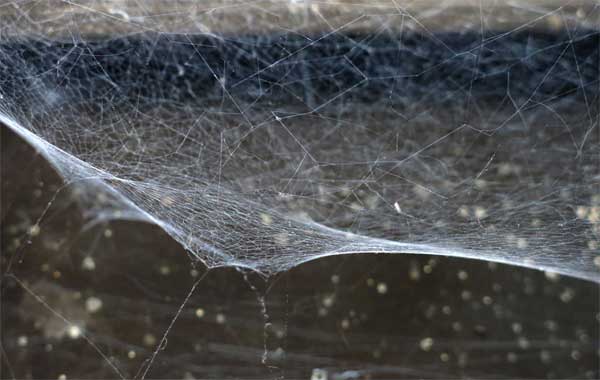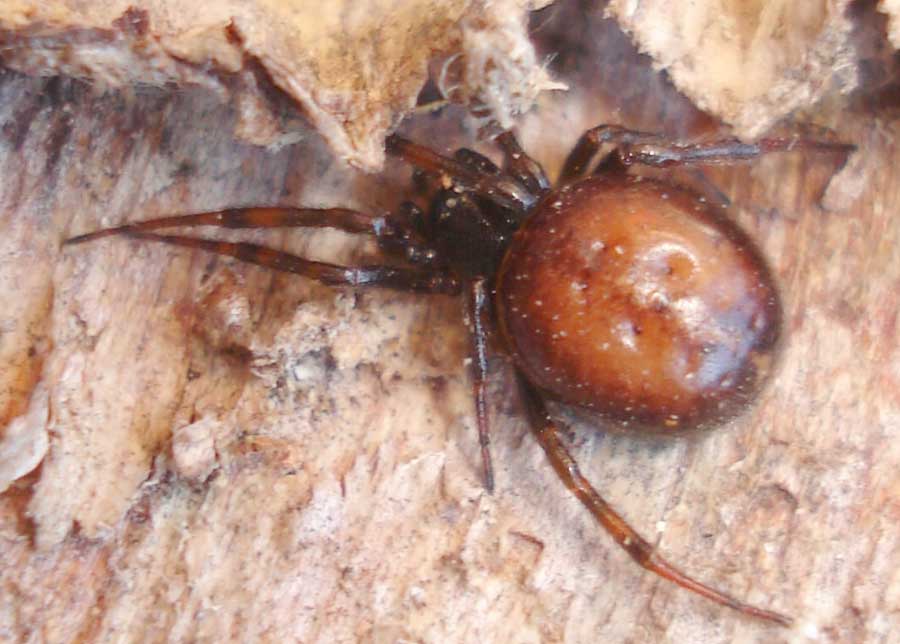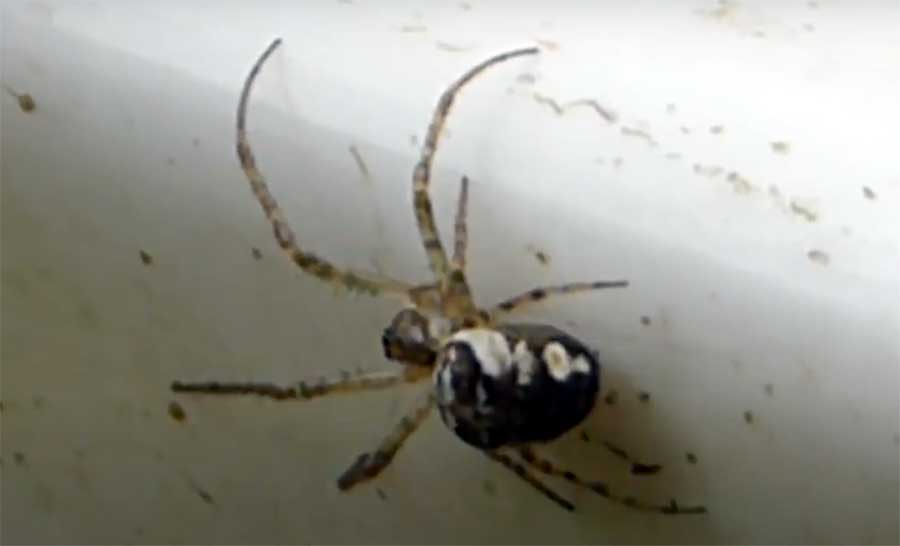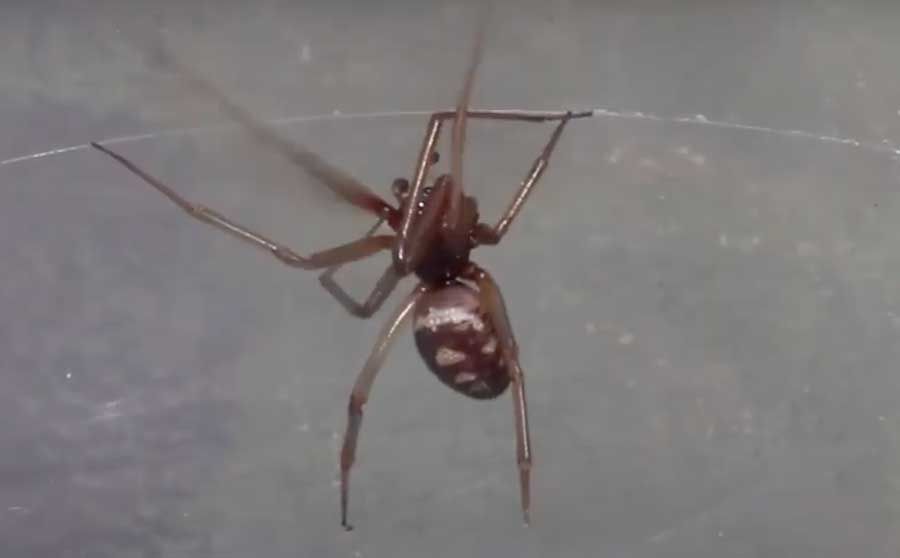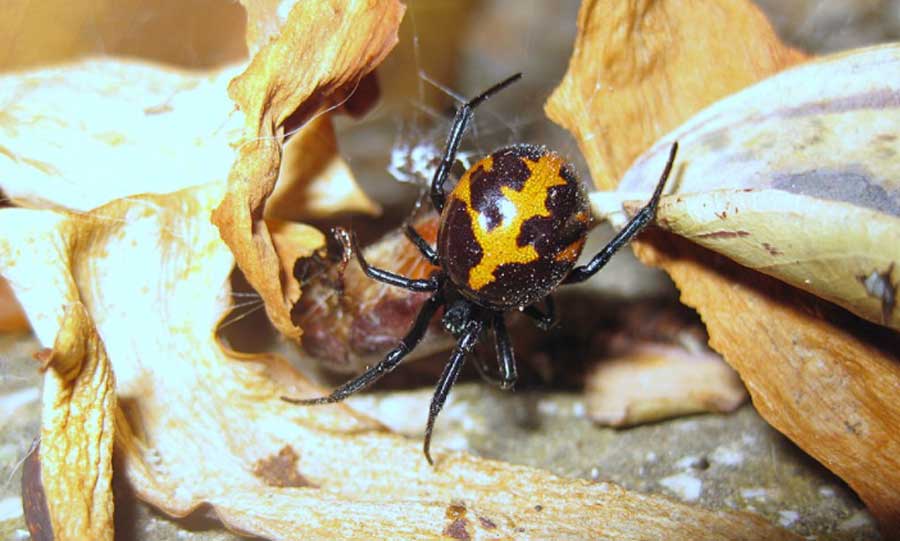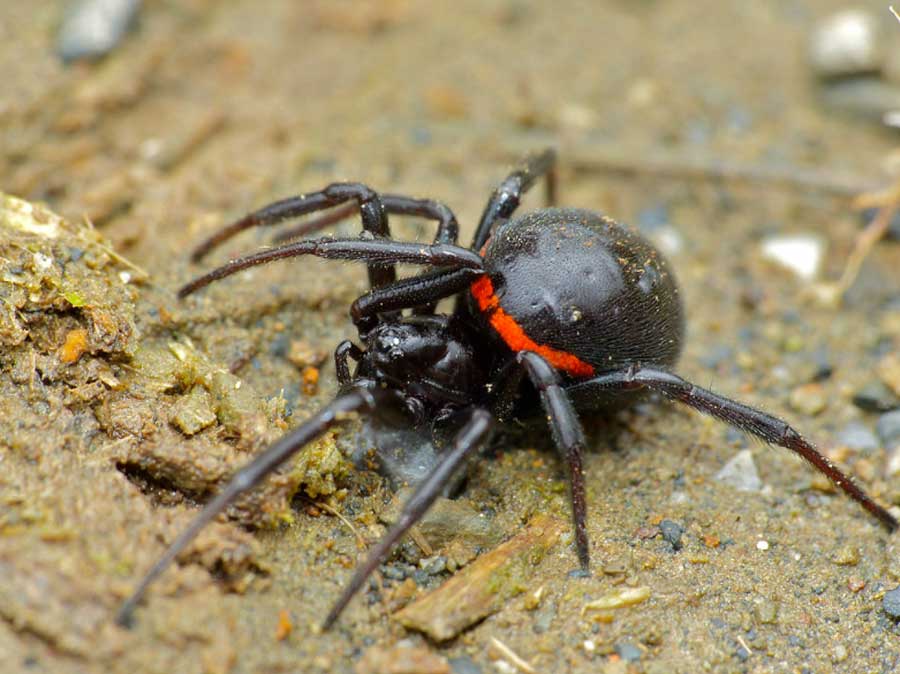False widow spiders in France
Although these spiders can cause concern for some people when found in France they are not considered to be really harmful and all these spiders are likely to do is give you a small and relatively painful harmless bite that can result in localised swelling that may last 48 to 72 hours in the case of the Noble False Widow - Steatoda nobilis
All have a narrow white or lighter band around the front of the abdomen towards their head but this and other marks often fade or disappear completely with age.
Rabbit hutch spider - Steatoda bipunctata – No French common name.
These False Widows are usually chestnut coloured, although some specimens can be lighter in colour. Frequently there is a line of tiny cream coloured dots running around the midline of the abdomen, and there is sometimes a pale line running along the top of the abdomen from front to back. Found in houses, sheds, out buildings including rabbit hutches which they seem to be especially attracted to. Extremely low likelihood of being able to bite a human. Female: 4.5-7 mm Male: 4-5 mm
Noble False Widow - Steatoda nobilis – Fausse veuve noire
This species originally from the Canary Islands and Madeira but has been found in France for at least 100 years with a preference for coastal regions. They have a bulbous abdomen with cream coloured markings that are often likened to the shape of a skull. Their legs are reddish-orange. They can be found both inside and outside of buildings. Bites, should they occur, are normally no worse than a bad bee or wasp sting. Female 8.5-14 mm Male: 7-10 mm
Cupboard spider - Steatoda grossa – Stéatode domestique
(also known as the dark comb-footed spider, the brown house spider, or the false widow or false black widow).
The abdomen of this false widow is a red-brown colour with a crescent shaped stripe at the front and three pale triangular spots along the top. These markings vary from spider to spider. Sometimes they're cream coloured and sometimes they're purple or very dark brown. Found in barns, sheds and houses and for most people the bite from this spider feels something like a bee sting and isn’t deadly. Females: 6.5-10 mm Males: 4-6 mm
False widow spider - Steatoda paykulliana - Stéatode toxique
This species is quite characteristic by its black colour and body with short bristles that make it appear smooth. Only the abdomen can have other colours and in France we often see a very visible dorsal abdominal spot: white, yellow, orange or red. There may also be a clear middle spot on the abdomen with sinuous edges. These warning colours are related to its toxicity to vertebrates, its potential predators and its bite can paralyse small mammals for a short period of time. Found in warm and dry environments, with little or no vegetation. Vineyards are a typical habitat. Rarely enter houses. Although its bite can be quite painful it isn’t life threatening for humans. Female: 8-13 mm Male: 4.5-6 mm
